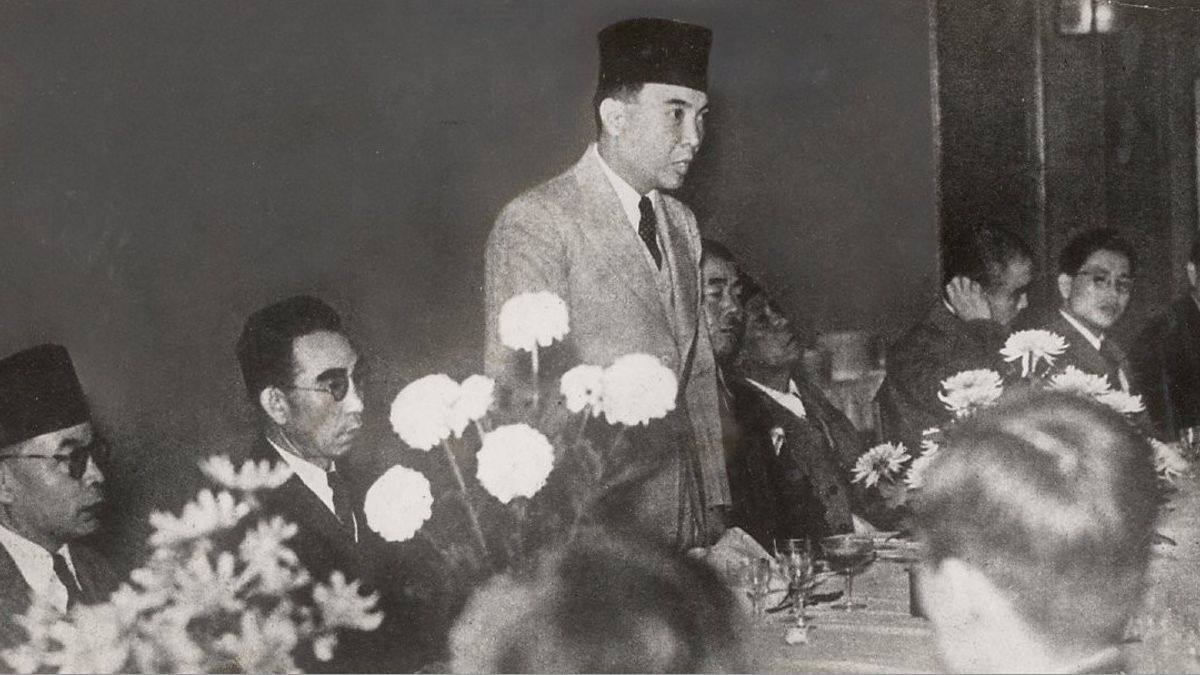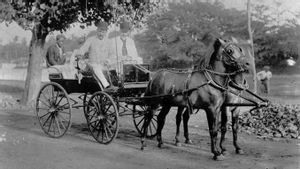JAKARTA - The cabinet reshuffle during the reign of President Soekarno or the Old Order (Orla) was divided into three phases. The first is the era of the struggle for independence (1945-1949), the second is the phase of parliamentary democracy (1949-1959), and the third is the era of guided democracy (1959-1968).
From these three phases, Soekarno directly led the reshuffle of the cabinet, except in the last two years of his leadership from 1966 to 1968. At that time, the cabinet was led by President Soeharto, as chairman of the presidium and as a presidential official from 1967 to 1968.
As explained by Ridho Al-Hamdi in the book Paradigma Politik Muhammadiyah (2020) in the era of the independence struggle, there were nine changes in the cabinet. Meanwhile, in the era of parliamentary democracy, there were 10 tinkering with ministers.
"In the era of guided democracy, President Soekarno acted as both president and prime minister, so that his power was single (monopower) and cabinet changes only occurred in the position of ministers," wrote Al-Hamdi.
After the end of Bung Karno's reign, Suharto acted as chairman of the presidium in the Ampera I Cabinet (1966-1967) and as a presidential official in the Ampera II Cabinet (1967-1968), only then changing to the New Order era where Suharto was appointed president. There were 28 cabinet changes during the Orla era.
In this change, according to Ridho Al-Hamdi, cadres from Muhammadiyah appeared to have filled the post of minister / prime minister in 20 cabinet changes. This means that there are eight cabinets where Muhammadiyah did not get ministerial positions at all.
"The eight cabinets are the Presidential Cabinet, the Amir Sjarifuddin I Cabinet, the PDRI Cabinet (Sjafruddin), the Susanto Cabinet, the Ali Sastroamidjojo I Cabinet, the Dwikora I Cabinet, the Ampera I Cabinet, and the Ampera II Cabinet. From the 28 cabinet changes, at least 16 people can be identified who are categorized as members and cadres of Muhammadiyah, "explained Al-Hamdi.
Reason for reshuffleThere are a number of factors why the president is reshuffling. This was explained by Anna Luthfie in her book Missing Leaders of Statesmen (2020). Luthfie said, one of the reasons is the decreased level of public satisfaction with government performance. Therefore, the change of ministers is dynamic, even though there are no detailed rules regarding when ideally the cabinet needs to be overhauled.
Everything returns to the authority and prerogatives of the president who selects, appoints and inaugurates ministers. Cabinet is a line of assistant to the president.
“The debate regarding when the ideal time for a cabinet to be reshuffled depends of course on the president. However, the president does not live in a political vacuum. Public perception is certainly a matter of consideration for the president to further improve the performance of his government, especially since President Jokowi was born and raised not as a political party official, but has more social capital from the public, "wrote Anna Luthfie.
Still according to Luthfie, in the history of Indonesian government, it was rare for a change of ministers to be made in the first semester of the government period. The change of ministers, said Luthfie, is usually done after a year of inauguration.
Another reason for the change of cabinets is the instability of the government. This problem can be seen from the president's habit of appointing ministers from the leadership of the political parties in coalition with him. As a result, when one of the coalitions that did not get a quota then campaigned calling for a cabinet reshuffle when there was a violation.
The English, Chinese, Japanese, Arabic, and French versions are automatically generated by the AI. So there may still be inaccuracies in translating, please always see Indonesian as our main language. (system supported by DigitalSiber.id)



